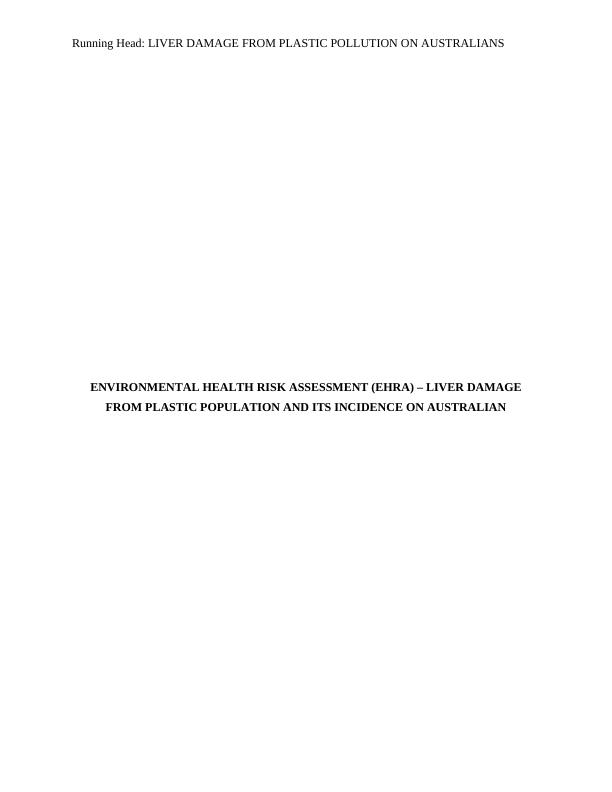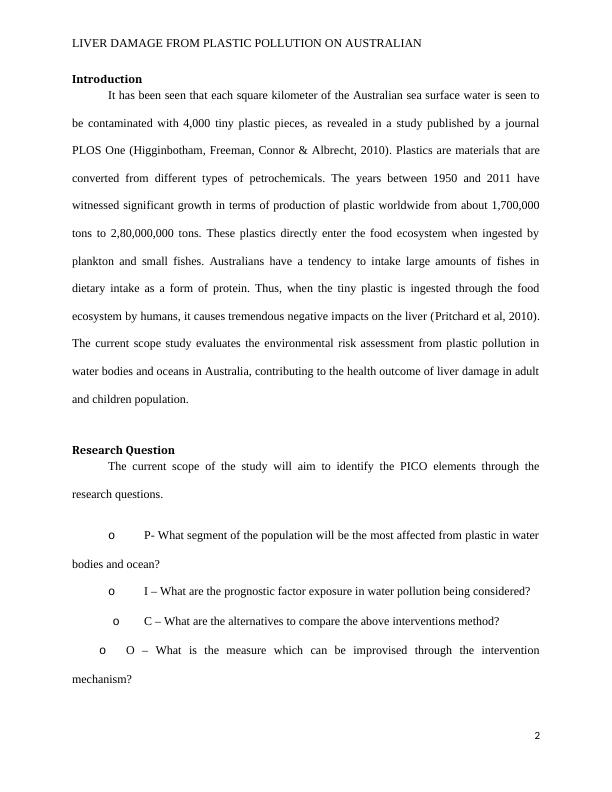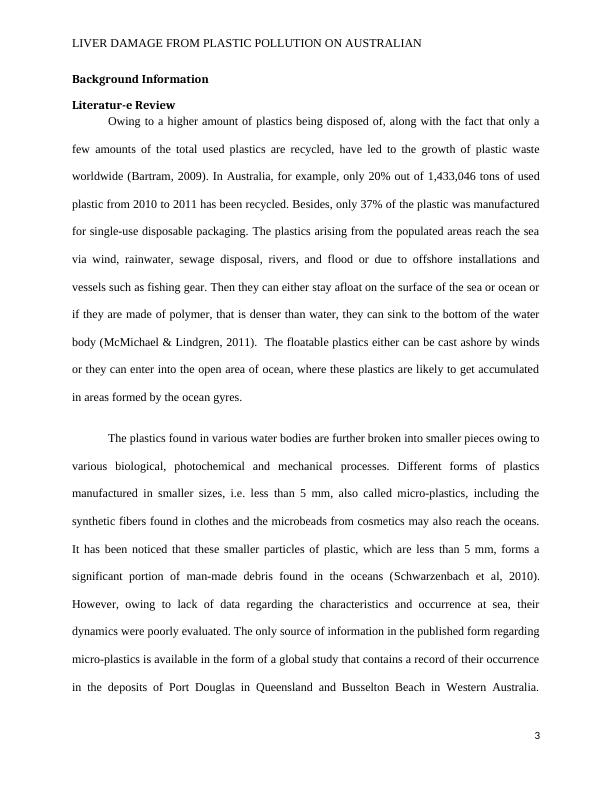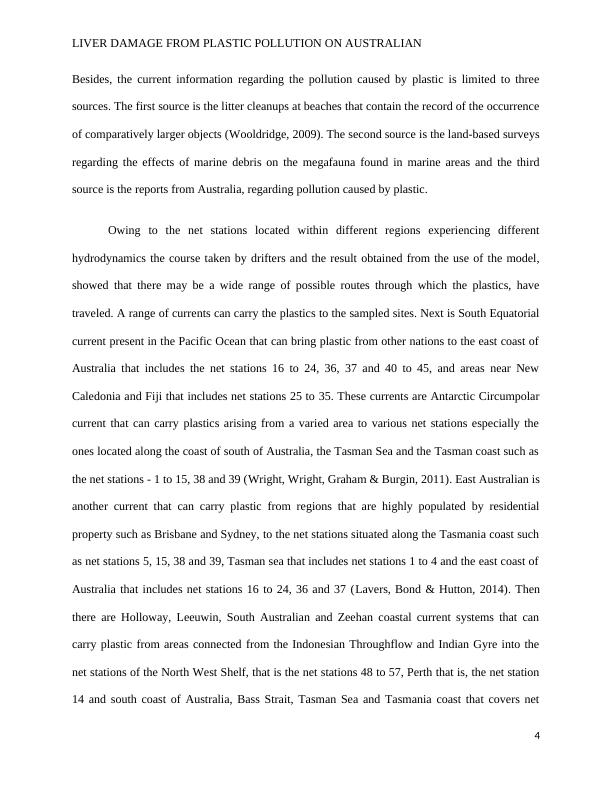Liver Damage from Plastic Pollution on Australians
Undertake an environmental health risk assessment for an environmental pollutant associated with a health outcome for a specified population.
14 Pages3961 Words144 Views
Added on 2023-04-19
About This Document
This study evaluates the environmental risk assessment from plastic pollution in water bodies and oceans in Australia, contributing to the health outcome of liver damage in adult and children population.
Liver Damage from Plastic Pollution on Australians
Undertake an environmental health risk assessment for an environmental pollutant associated with a health outcome for a specified population.
Added on 2023-04-19
ShareRelated Documents
End of preview
Want to access all the pages? Upload your documents or become a member.
Pollution and exploitation of Marine ecosystem
|9
|2359
|379
Waste in the Ocean
|14
|805
|86
Assignment English for Academic Purposes
|5
|1373
|181
Applied Ethics and Sustainability: Pollution and Exploitation of Marine Environment
|12
|2652
|123
Banning Single Use Plastics to Reduce Terrestrial and Marine Pollution and Greenhouse Emissions
|9
|2290
|386
Impact of Human Actions on Endangered Species Research Paper 2022
|9
|2370
|18




